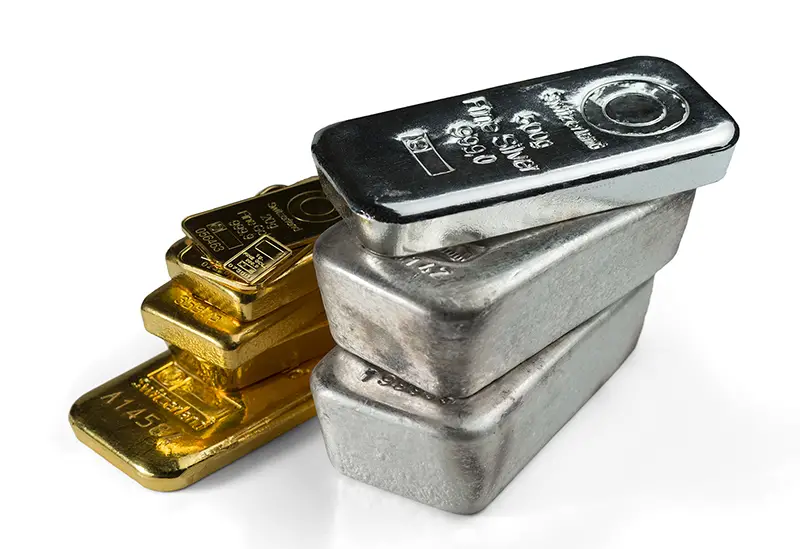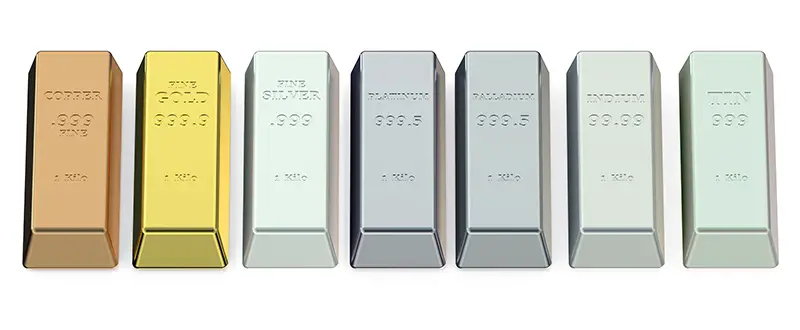Click here to get this post in PDF
For the unfamiliar, investing in gold or other precious metals seems like something complex or mysterious, the kind of stuff that could only happen in treasure hunting movies. But, there’s an established and well-regulated way of investing in precious metals in the US. One way to do it would be to open a precious metals individual retirement account (IRA) with a specialty brokerage firm.
A precious metals IRA would allow an individual to open an account that can hold precious metals as physical assets. This is different from buying precious metals through digital apps or shares of companies that invest in precious metals. This allows you to purchase the precious metals bullions themselves. You can learn more about this by reading reviews about gold IRAs such as the Augusta Gold IRA reviews. Here’s how to use a specialty IRA to invest in precious metals.
What’s A Precious Metals IRA
A gold or precious metals IRA is a self-directed individual retirement account. The same rules apply to both the regular IRAs and precious metals IRAs with a few distinctions. They also have the same cap limits of dollar amounts holders are permitted to deposit as yearly contributions. The main difference between a regular IRA and a precious metals IRA is that the latter allows its account holder to invest in precious metals as physical assets.
This is where a lot of IRA investors get confused. Americans are permitted to hold physical items of gold or other precious metals, but not those which are part of their IRA inventory. The other part of the restriction is that they’re not allowed to mix in their personal precious metals collection with those in their IRA inventory.
The account holder of a precious metals IRA isn’t allowed to personally keep the physical assets of the IRA account. They have to find a custodian. A precious metals IRA can hold precious metals such as silver, palladium, and platinum. It can also be invested in non-physical precious metals. An example is a mutual fund that invests in bullions and precious metal stocks. They can place money in precious metals indices through exchange-traded funds (ETFs). They can also be used to buy shares in mining companies.
How To Use IRA To Invest
There are two basic types of precious metals IRA. It can be set up either as a pre-tax IRA or a Roth IRA. The basic difference between these two is that the account holder’s contributions in a pre-tax IRA aren’t taxes but are, in fact, classified as tax-deductible items. In a Roth IRA, the appropriate taxes have already been deducted from the contributions.
The most common practice of using an IRA to invest in precious metals would be to open a precious metals IRA with a brokerage firm. There are many reputable and well-established brokerage firms out there. It would be best if you could spend some time researching them before you settle with one. The account holder won’t be allowed to physically keep the precious metals, but would instead have to appoint a custodian approved by the Internal Revenue Service (IRS).
Here are some of the commonly-accepted precious metals IRA custodians:
- Banks
- Brokerage firms
- Trust companies
- Credit unions
- Savings and loan associations
The entity that you’ll appoint as custodian of your precious metals should’ve already met the requirements for approval by the US federal government. Other entities of a similar nature or scope of business that have already received state approval can also be appointed as custodians. Do know that only precious metal bullions that have been approved by the IRS can be included in your IRA. This means that they’re supposed to meet standards of fineness. You won’t be allowed to include your personal inventory of precious metal coins or bullions in your IRA inventory, even if you have tons of them.
Limitations On Contributions
As with the regular IRA, there are limitations on how much you can contribute to your precious metals IRA. The IRS has set a contribution cap of USD$6,000 to gold and other precious metals IRA for 2021. The exception to this rule is people who are 50 years of age or older. They’re allowed to contribute an additional USD$1,000, thereby increasing the yearly limit to USD$7,000 for people of their age or older.
Those who can wait until they reach the age of 59 and ½ years old before they ask for a payoff or distribution won’t incur any penalties or taxes for the payoff. But, those who would withdraw from their precious metals IRA before they reach this age would incur an additional tax of 10%.
It would be good to know that you won’t be allowed to open a precious metal or gold IRA through the regular retirement account fund managers using your traditional IRA funds. Most conventional fund managers don’t offer specialized retirement account services such as precious metals IRA.
You should look for a brokerage firm or other special custodians from approved entities that offer precious metals IRA services. You’d be better off if you could find one which can handle everything for you, from purchasing precious metals to storing them to giving you inventory updates and handling tax reporting requirements.
Weight Of Precious Metals
You won’t be allowed to use your current traditional retirement accounts to invest directly in physical assets of precious metals since most conventional retirement account fund managers don’t offer this service. The way to do it would be to set up a precious metals IRA with a brokerage firm or specialty custodian and then transfer money from your regular IRA to the precious metals IRA. Make sure everything is IRS-approved.
You may also like: Best Gold IRA Companies for 2022
Disclaimer
The information contained above is provided for information purposes only. The contents of this article are not intended to amount to advice and you should not rely on any of the contents of this article. Professional advice should be obtained before taking or refraining from taking any action as a result of the contents of this article. Sandra Hinshelwood disclaims all liability and responsibility arising from any reliance placed on any of the contents of this article.
Image source: Depositphotos.com


